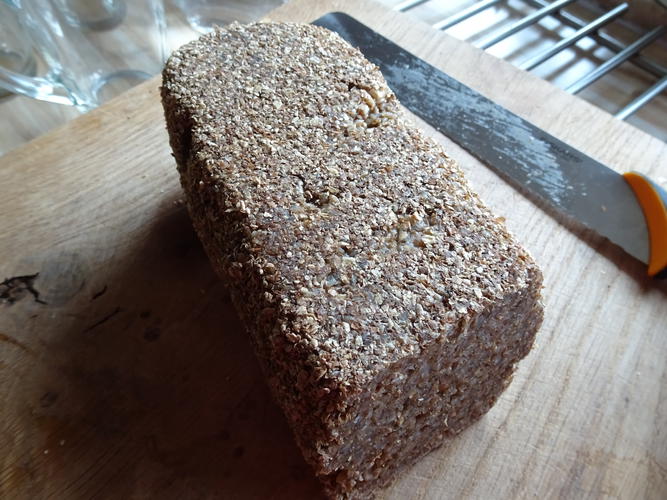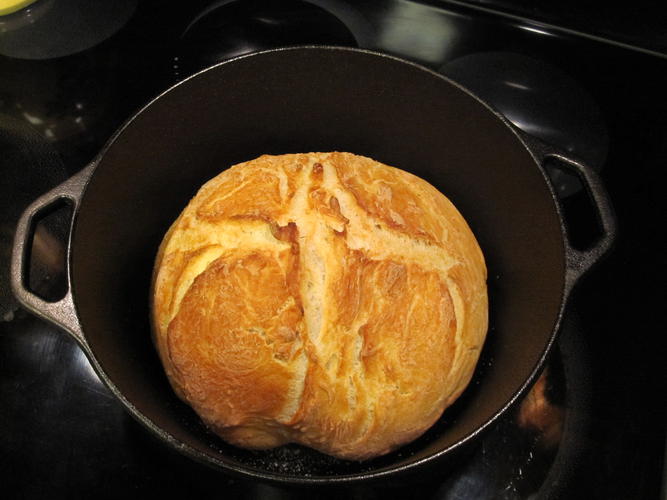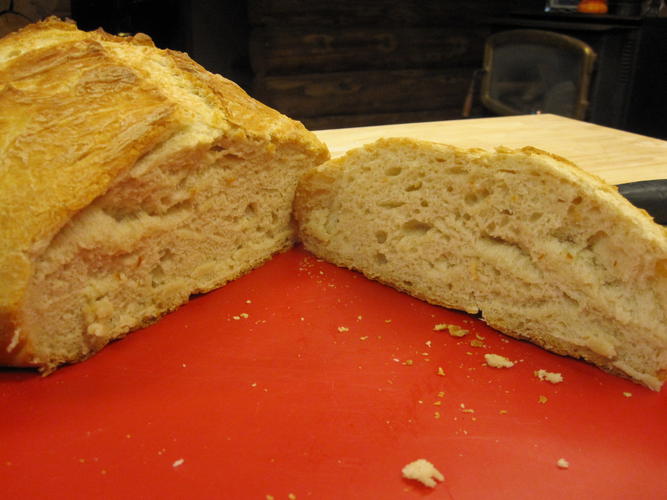Results 1 to 10 of 1198
Thread: Who bakes bread?
Hybrid View
-
01-23-2017, 05:40 AM #1

If it were me, I'd also strongly consider getting some Diatomaceous Earth to dust over/around the outside of the sealed containers. Link below for further information
 .
.
https://en.m.wikipedia.org/wiki/Diatomaceous_earthDecades away from full-beard growing abilities.
-
The Following User Says Thank You to Crawler For This Useful Post:
kruppstahl (05-05-2017)
-
03-05-2017, 09:28 AM #2

I baked Friesian ryebread, started Friday night. Slow food by excellence: you soak broken rye grains overnight, next day add salt and wholewheat flour or treacle for stickiness as rye does not contain much gluten.Then bake it for 6 hours at 90 degrees Celsius. Put an ovendish filled with water underneath as you don't want it to dry out. No yeast. The flaky crust is wheatbran. I don't like the commercially available dark rye bread as it has vinegar added as a preservative. As you can tell from the stains on the breadknife this is a moist and sticky bread.

Dark rye bread has been the staple bread in Northern Europe in areas with soil too poor to grow wheat. My grandfather used to tell me that wheat bread was considered a luxury when he was young. It is said that Napoleon fed rye bread to the horses as he felt it was unfit for humans. Nowadays it is a specialty product. The missus and the children don't like it.Last edited by Kees; 03-05-2017 at 02:17 PM.
Plus ça change, plus c'est la même chose. Jean-Baptiste Alphonse Karr.
-
03-06-2017, 12:35 AM #3Senior Member



- Join Date
- Jul 2012
- Location
- Chicagoland - SW suburbs
- Posts
- 3,809
- Blog Entries
- 1
Thanked: 734
-
03-06-2017, 07:40 AM #4

I'm curious if you folks have similar practices, like that of what we do at work? Do you adjust your oven temperature depending on how long the bread has been in the oven?? Having virtually no experience baking bread in a home kitchen, I have no idea if what we do is a normal practice. Some, but not all, varieties of bread we produce will bake at varying temperatures. This would be a difference of anywhere between 5 and 50 degrees Fahrenheit.
Here is my understanding of the principal...
The 1st Third of the baking time: tweaked to impact loaf height/"jump" in the oven. Tweaking the temp lower by 5-15 degrees will make a taller loaf; an increase of that much will help "lock-in" the height of a loaf that may be tall enough already.
The middle Third: is for "doneness". The primary focus here is getting the core temp above food-safe. If the temps vary throughout the bake time, this portion will be as high, or higher* than the other two thirds.
*= A couple of oddballs are of a single temp, until the last third where it is 5 degrees higher.
Final Third: mostly impacts color of the finished product. Obviously, a higher temp makes a darker loaf.
Does that "Bread Maker's Apprentice" discuss this?
Sorry, I'm babbling again lol.Decades away from full-beard growing abilities.
-
03-06-2017, 08:09 AM #5

I use a constant temperature if I use an oven; I don't know what my bread machine does.
Plus ça change, plus c'est la même chose. Jean-Baptiste Alphonse Karr.
-
03-06-2017, 08:23 PM #6Senior Member



- Join Date
- Jul 2012
- Location
- Chicagoland - SW suburbs
- Posts
- 3,809
- Blog Entries
- 1
Thanked: 734
For me it depends on the bread I'm making. For baguettes, I preheat the oven to its max, 500. I use the max heat because I'm going to be opening and closing the oven door in the initial part of the baking to spray water in there to create steam (three good shots of water in 30 second intervals). I will lose oven temp during that time and need the hot oven to get that blast of steam. I leave it at 500 for the first 5-7 minutes then drop it to 450 for the rest. I find that if I bake at 500 all the way through the crust gets too dark before develops a good texture. Other breads I bake at one temp all the way through if I am not in need of steam.
-
03-08-2017, 03:04 AM #7At this point in time...




- Join Date
- Jun 2007
- Location
- North Idaho Redoubt
- Posts
- 27,068
- Blog Entries
- 1
Thanked: 13249
First Dutch Oven Loaf very very happy with the outcome this was the first complete try of the recipe I posted above


-
03-08-2017, 03:14 AM #8

When does Chez Glen start taking reservations?
"The sharpening stones from time to time provide officers with gasoline."
-
03-06-2017, 08:17 AM #9

Similar rye bread can be bought in Gemany and Danmark.
https://en.wikipedia.org/wiki/Rye_breadPlus ça change, plus c'est la même chose. Jean-Baptiste Alphonse Karr.
-
03-06-2017, 03:39 PM #10

Most modern home ovens are not accurate. Many will heat up fine but when you put the product in the temp drops and never comes back up again. If you bake you must buy a good temp gauge. In my case I heat the oven 40 degrees above what I need and when I put the product in I drop it 15 degrees and then half way through the bake I drop it another 10 degrees or so. Also since I live in a high altitude area any baking can be dicey. I'll usually increase the baking temp by 25 degrees over the recipe temp for the first 10-15 minutes and then drop it to the specified temp.
No matter how many men you kill you can't kill your successor-Emperor Nero


 3013Likes
3013Likes LinkBack URL
LinkBack URL About LinkBacks
About LinkBacks









 Reply With Quote
Reply With Quote
